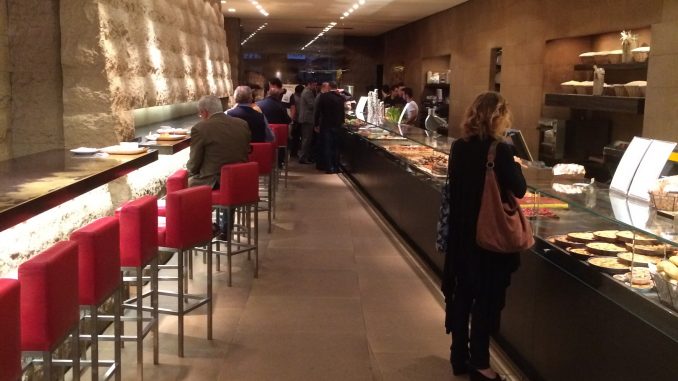
La Marzocco’s Scott Callender Reflects on His Time Spent Living Within Milan’s Café Scene
BY JON SHADEL
SPECIAL TO BARISTA MAGAZINE
World travelers in pursuit of rich coffee experiences could theoretically journey to any corner of the globe and soak up the local café culture. But if there’s one destination that every caffeine-fueled itinerary should include, it has to be Italy.
As a destination, Italy teems with possibility: To the fashionable, it’s a trendsetter. To the art lover, its galleries are filled with masterpieces. And to the history buff, its classical cities tell stories through crumbling relics of fallen empires. But to us coffee lovers, Italy is best known as the birthplace of espresso, and few cities are as linked to its history as Milan.
It was in Milan that espresso was first introduced at the 1906 World’s Fair. And in the century since, the city has earned a pioneering reputation for its role in the history of coffee. However, in recent years it seems that the city’s trendsetting fashion industry and booming economy has overshadowed the coffee scene.

But Scott Callender, director of La Marzocco USA’s home division, believes there is still much to be learned from Milan’s heritage-rich café scene. œWhen you sip espresso in Italy, you are sipping the history of over 100 years of espresso culture, says Callender, explaining how Milan’s espresso ”just like the rest of Italy ”is stepped in tradition. It’s a tradition you can literally taste. œToday, Italian coffee tastes like Italian coffee has tasted for many years, he says.
Callender moved to Milan with his wife in 2011. They both left their successful careers in California’s Napa Valley to fulfill a lifelong dream of living in Italy. Callender was able to make the move by combining his love for Italy with a passion for business, and he studied at a local university to complete his MBA before returning home to the U.S.

It was at Bar Massimo, a café near his university, where he fell in love with the ritual of espresso in Milan. œDuring all of our breaks between classes, we would go to the closest bar and all stand at the counter, discuss ideas, and sip our espresso, he says. œThe bar was great because it was run by a family: the barista was the patriarch, the son was running the business side, the matriarch ran the cash register, and the son’s wife kept the store in order.
This traditional approach to espresso is a contrast to many of the innovations happening in third-wave specialty coffee in North America. œIf you are going to Italy expecting that you are going to have a shot of espresso that is similar to what you are used to having in your hometown specialty cafe, you will be disappointed, Callender says. œCoffee in the U.S. is being optimized for a flavor profile preferred by a younger generation while coffee in Italy has been optimized for a classic flavor profile.

Callender believes that third-wave baristas could benefit from a greater appreciation of the traditions that have inspired the American espresso experience. œIn general, Italians believe there is wisdom in the past, while I find Americans are constantly scrapping the past and starting over, he explains. And while the quality of espresso in Italy has diminished due to pressure to keep costs low (around one euro per shot), Callender explains that the appeal comes from the complete Italian café experience, not just the espresso.

œFor me, the experience is holistic ”not just a flavor, but also a feeling and an atmosphere, he says. œI love the style of the café culture in Milan: traffic whizzing by outside, the sounds of enthusiastic Italian greetings when you walk in the café, and the ritual of stirring sugar into the espresso.
œIt just feels right to me, Callender says, œbecause that rhythm was started here in Milan. And in the birthplace of espresso, he assures us that the rhythm hasn’t waned.
Jon Shadel is a Portland-based writer and lover of fine coffees. He writes for Oregon Business and Oregon Home magazines. He’s also the founder of Rusty Bike Media, a storytelling agency helping startups, lifestyle brands and nonprofits engage their target audience. With years of experience as a barista, he loves coffee culture and is often found furiously typing in a cozy cafe.


